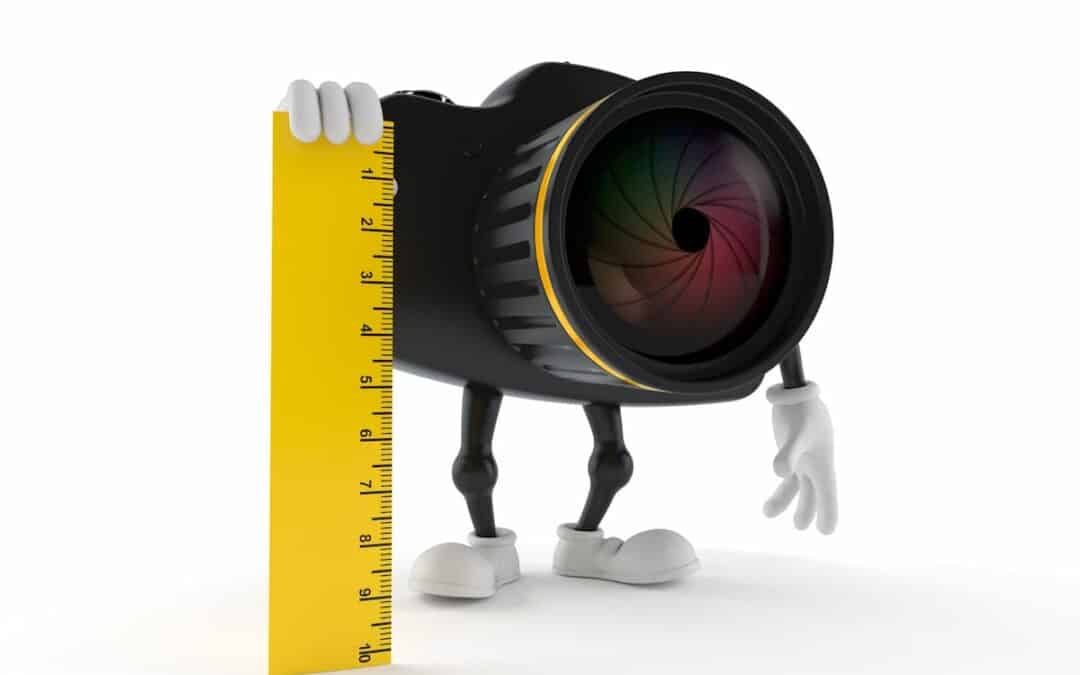If you’re a photography novice, you may be wondering what all the numbers on your camera lens mean and why millimeters were chosen as the measurement. You aren’t alone! Cameras are complex machines that have evolved throughout the years, so it’s understandable to have some questions.
Camera lenses are measured in mm because it’s a proper scale to measure the distance between the plane of a camera lens and the subject of a shot. In millimeters, even extreme lengths aren’t incomprehensible numbers.
The rest of this article will answer all your questions about camera lenses and their various features, so you’ll be a more knowledgeable photographer by the end. If you’re ready to get the perfect shot, keep reading!
Table of Contents
What Do the Numbers Mean on a Camera Lens?
The numbers on a camera lens represent the lens’s focal length in millimeters. The measurement indicates the distance from the point where light rays converge to form a clear image of a subject and the actual subject.
Some lenses only have one focal length, so they’ll just have one number in millimeters representing its focal length, such as 500 mm. These lenses are also called “prime” lenses. When you’re using a prime lens, you have to physically get closer to a subject to get it to appear closer in your shot. Other lenses are zoom lenses that have a range of focal lengths.
The larger the number in millimeters, the more zoomed in the image is.
Camera lens manufacturers chose millimeters to present this measurement because the value in millimeters never gets too big or small to exceed comprehension and cause confusion. You can say that a 100 mm lens is 1.057e-17 in light-years, which is technically accurate, but that’s too complicated! When measured in millimeters, the numbers are always easily understandable.
Another number on your lens is the f-stop value, which is the widest aperture of the lens or how fast it can go. The “f” stands for focal length, which controls the aperture. Some lens manufacturers present this value as a ratio. A wider aperture allows more light into the lens when you use a camera, allowing your image to look more dimensional.
Do you know that hole in a lens that appears when the shutter opens? That’s aperture. A large aperture has a wide diameter, and a small one has a short diameter. The size of the aperture is expressed with the f-stop value: small numbers in the denominator indicate a large aperture, and large numbers in the denominator indicate a small aperture. Therefore, f/1.4 is a large aperture that lets in a lot of light, and f/22.0 is small and doesn’t let in a lot of light.
A large aperture in full sunlight lets in so much light that the photo appears washed out, and it could even burn the image if you’re using physical film rolls. If you’re taking pictures at night, you have to use a large aperture to ensure that the camera can reflect enough light to capture the image.
Finding the correct f-stop requires a lot of trial-and-error, and there’s no one answer for how much light a photograph needs. Your ideal aperture largely depends on the photographer’s artistic vision and preferences.
However, here are some general tips for choosing your f-stop:
- Use small apertures for sunny days.
- Add flash to reduce the needed aperture.
- Use large apertures for portraits to blur the background for a “bokeh” effect.
- If you want equal focus on the foreground and background, use smaller apertures.
You’ll also find a number following a symbol that looks like a circle with a line through it. This symbol indicates the diameter of your lens measured in millimeters. You’ll need to keep this value in mind when shopping for filters and lens caps.
Some lenses also have numbers that are indicated in meters and feet. This measurement would be the minimum focusing distance, which tells the photographer how close they can get to their subject before the lens can no longer get a clear focus.
The minimum focusing distance varies by the lens and by focal length. A camera that enables you to get high-quality close-ups is more versatile and gives you more options for what kinds of photos you can capture and in how much detail.
If your lens has a large sensor, it needs more distance to focus. Full-frame DSLRs have the most considerable minimum focusing distance. For the best close-ups, you’ll need a macro lens.
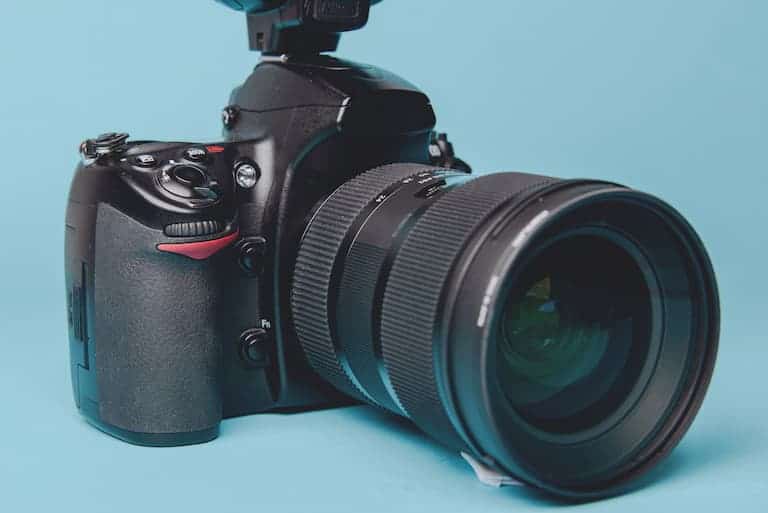
What Is Focal Length?
Focal length is a measurement that represents the calculation of a distance from the point where light rays meet to form a clear image of a subject at the focal plane in a camera.
Focal length tells the photographer a lot of information, including the angle of view and the magnification. The angle of view is how much of a scene the shot can encompass, and magnification is how significant elements in the photo will be.
At a short focal length (which would be a lower number in millimeters), the angle of view is wide with low magnification. At a long focal length (a larger number in millimeters), the angle of view is narrow, and the magnification is high.
Lenses with smaller focal lengths are called wide-angle lenses. Telephoto lenses have longer focal lengths.
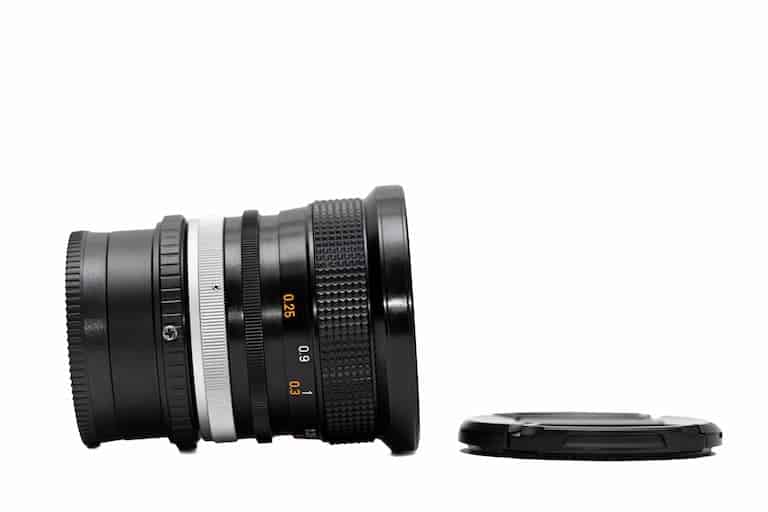
Therefore, if you want to capture a lot of a scene, such as a vast landscape, you’ll want a lens with a short focal length and fewer millimeters. If you want to capture the detail of one or two elements within a scene, you should use a lens with a long focal length, which is a higher number in millimeters.
Choosing the Right Lens
There are a lot of factors that contribute to what kind of lens you need for a shoot. First, you should ask yourself if you need a prime lens with a fixed focal length or a zoom lens with variable focal lengths.
The following table outlines the pros and cons of the different types of lenses to help you make your decision:
| Type of Lens | Pros | Cons |
|---|---|---|
| Prime | Offer wider apertures than zoom lenses. Brighten low-light scenes. More control over depth of field. Typically more compact than zoom lenses, so easier to transport and hold. Generally cost less because they contain less glass. Better at capturing accurate images. | More physical movement is required to change up shots. Possibility of losing a picture because you’re too close or too far away. |
| Zoom | No need to physically move to zoom in or out. More variety in photos. Less likely to risk losing the shot because of camera adjustments. | Not great for use in low-light environments. Large size and weight, which requires more time for packing and transportation. Can’t shoot discreetly. Heavier than prime lenses. More prone to distortion and aberration. |
Wide-Angle vs. Ultra Wide-Angle vs. Telephoto Lenses
Another thing you’ll need to consider is if you need a wide-angle lens or a telephoto lens, which depends on what you’re photographing.
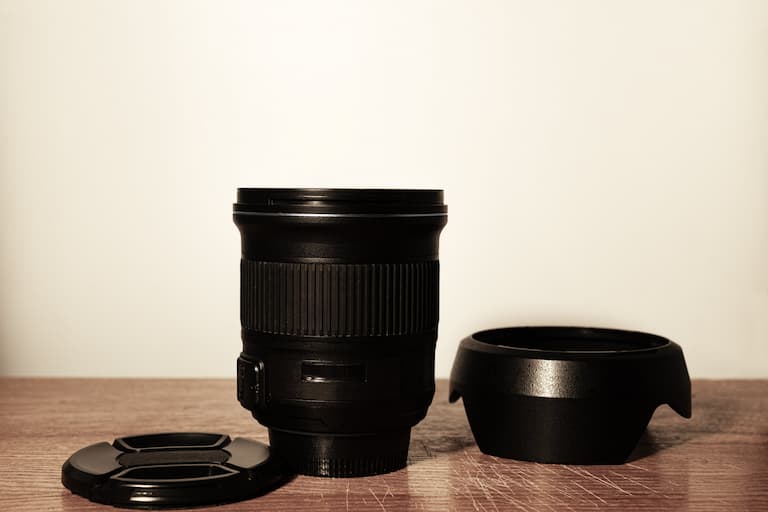
Wide-angle lenses are 35 mm and smaller. Here are some subjects that call for a wide-angle lens:
- Architecture, so you can capture entire buildings.
- Building interiors.
- Landscape photography.
- Large group photos (the cast of a show, a class picture, a family reunion).
Ultra wide-angle lenses are called fisheye lenses. Here are some situations that may call for a fisheye lens:
- You’re shooting an interior, and you can’t find a position that allows you to capture the entire scene in one shot.
- Underwater photography.
- Horizon.
- City photography.
- Behind-the-scenes shots.
Telephoto lenses start at 70 mm. Here are some subjects that require a telephoto lens:
- Portraits
- Birds
- Nature
- Wildlife, especially if it’s dangerous wildlife when it isn’t safe to get too close.
- Sports
Whichever lens is right for you ultimately depends on what you’re shooting and your priorities and goals with your photography.
Macro lenses are specialty lenses for ultra-close focus. Some lenses have a macro focusing feature, but this feature can’t achieve as close a focus as an actual macro lens. Many wedding photographers use macro lenses to get close-ups of the ring and guests’ expressions.
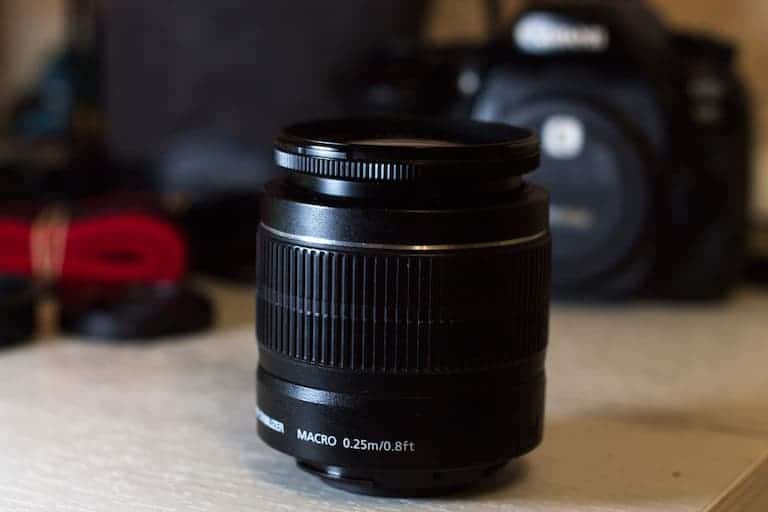
Use the following table as a guide for what kind of lens you should purchase. All links are to Amazon.com.
| Type of Lens | Description | Uses | Product Recommendation |
|---|---|---|---|
| Ultra-wide or fisheye | Focal length of less than 24 mm, allows you to play with distortion | Landscape, architecture, interiors, extreme sports | Altura Photo Camera Lens Features a hybrid aspherical element that enables different viewing angles and sharp images. The removable hood allows for 180-degree views. |
| Wide-angle | Focal length of 24 mm-35 mm, available as primes or zooms, variable or fixed maximum aperture | Landscape, architecture, group shots, astrophotography | Rokinon Camera Lens Low dispersion glass elements produce sharp images even in low light conditions. Allows for depth-of-field control. |
| Standard | Focal length of 35 mm-70 mm, reproduces a picture with a natural angle of view | Almost all kinds of photography: street, landscape, portrait | Canon STM Camera Lens Lets in more light than other standard zoom lenses, near-silent focus motor, reasonable price for the quality. |
| Telephoto | Focal length of more than 70 mm, focus on details of distant subjects | Sports, wildlife, portraits, landscapes | Nikon Camera Lens Comes as part of a bundle with other accessories, a programmable control ring, and is weather-sealed. |
| Superzooms | Do-it-all lens that covers focal lengths from wide to telephoto | Situations where you can’t change lenses, such as when you’re traveling | Canon Zoom Camera Lens Smooth zooming, lightweight compared to similar lenses, and reasonably priced. |
| Macro | Focal length between 40 mm and 200 mm, best for extreme close-ups | Products and advertising, portraits | Canon Macro Camera Lens An inner focusing system with USM and full-time manual focus, image stabilization, and ultrasonic focusing. |
Other factors To Consider When Choosing a Camera Lens
Here are some other factors you’ll need to consider when shopping for a new camera lens:
- Size and weight. More considerable focal lengths and apertures mean that the lens will be bulky and heavy. If you don’t want to lug around a hefty lens, you’ll have to sacrifice some focal length and aperture to get a lighter lens.
- Price. Lenses vary widely in price. You can get some simple lenses used for less than fifty dollars, whereas other specialty lenses can cost tens of thousands of dollars. For example, the Sigma 200-500 mm f/2.8 APO lens is over $25,000! Make sure that you have a realistic budget before you start your search for a lens – otherwise, it’ll be easy to break the bank.
- Image stabilization. Some lenses come with image stabilization that allows you to use slower shutter speeds without getting blurry photos. If you’re a novice, have shaky hands, or you’re going to be using the lens for video, you should ensure that the lens has good image stabilization.
- Weather-sealing. Some lenses aren’t weather-sealed, some are partially sealed, and some are entirely protected against rain and dust. If you’re planning on taking lots of pictures outside, you should look into getting a lens that will withstand the elements.
- Camera compatibility. Lenses aren’t one-size-fits-all. If you have a Canon camera, you should get a Canon lens, and if you have a Nikon camera, you should get a Nikon lens, and the same with Sony. Some third-party manufacturers, such as Sigma and Tamron, make lenses for interchangeable cameras but take extra care and ensure that your camera is compatible with the lens.
With all this information in mind, you should be able to get the right lens for you and your needs.
Conclusion
Millimeters are the most practical way to display a camera’s focal length, which is essential information a photographer needs to know when purchasing or using a lens.
The focal length determines what’s in the frame and how detailed it is. A skilled photographer can get the perfect shot with the right focal length, a high-quality and situation-appropriate lens, and some know-how!

